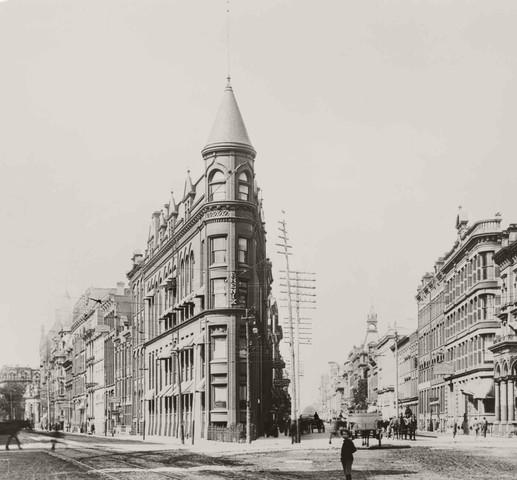
Building Toronto – The Gooderham Building
Building Toronto – The Gooderham Building
The Gooderham “Flatiron” Building, Toronto, 1898.
The Coffin Block, Toronto, 1888. Courtesy of Toronto Public Library.
East of the St. Lawrence Neighbourhood is the Distillery District, which includes the largest collection of Victorian-era industrial buildings in North America. Established first as a mill in 1832 by William Gooderham and his brother-in-law, James Worts, the family founded Gooderham & Worts, once the largest manufacturer of distilled spirits in Canada.
When James Worts died in 1834, he left his brother in charge of both the business and his recently orphaned son. William groomed the younger James for a partnership in the company, which added its distillery three years later.
The Gooderham & Worts complex grew to become an industrial highlight of Toronto, and from there Gooderham set his sights on more distant markets, shipping to Montreal in the 1840s.
The company’s continued growth was undeterred by a fire in 1869. They rebuilt, even stronger than before, and in 1874-75, Gooderham & Worts produced over 2 million gallons of spirits, or one-third of the entire Canadian market. Shortly before his death in 1881, William Gooderham turned over much of the business to his third son, George. From the helm of one of Canada’s leading businesses at the turn of the century, George expanded the family empire.
In addition to investing in financial services, real estate, mining and railways, George Gooderham commissioned the construction of new buildings. Among these was the Gooderham Building. Built in 1892 and designed by David Roberts Jr., it is recognizable for its distinctive wedge shape, which lends it the name “flatiron”. It’s the second such flatiron building on the site and predates the taller, more famous New York Flation building by a decade.
At the start of the 20th century, he turned his attention to creating a luxurious hotel for Toronto: the King Edward.

